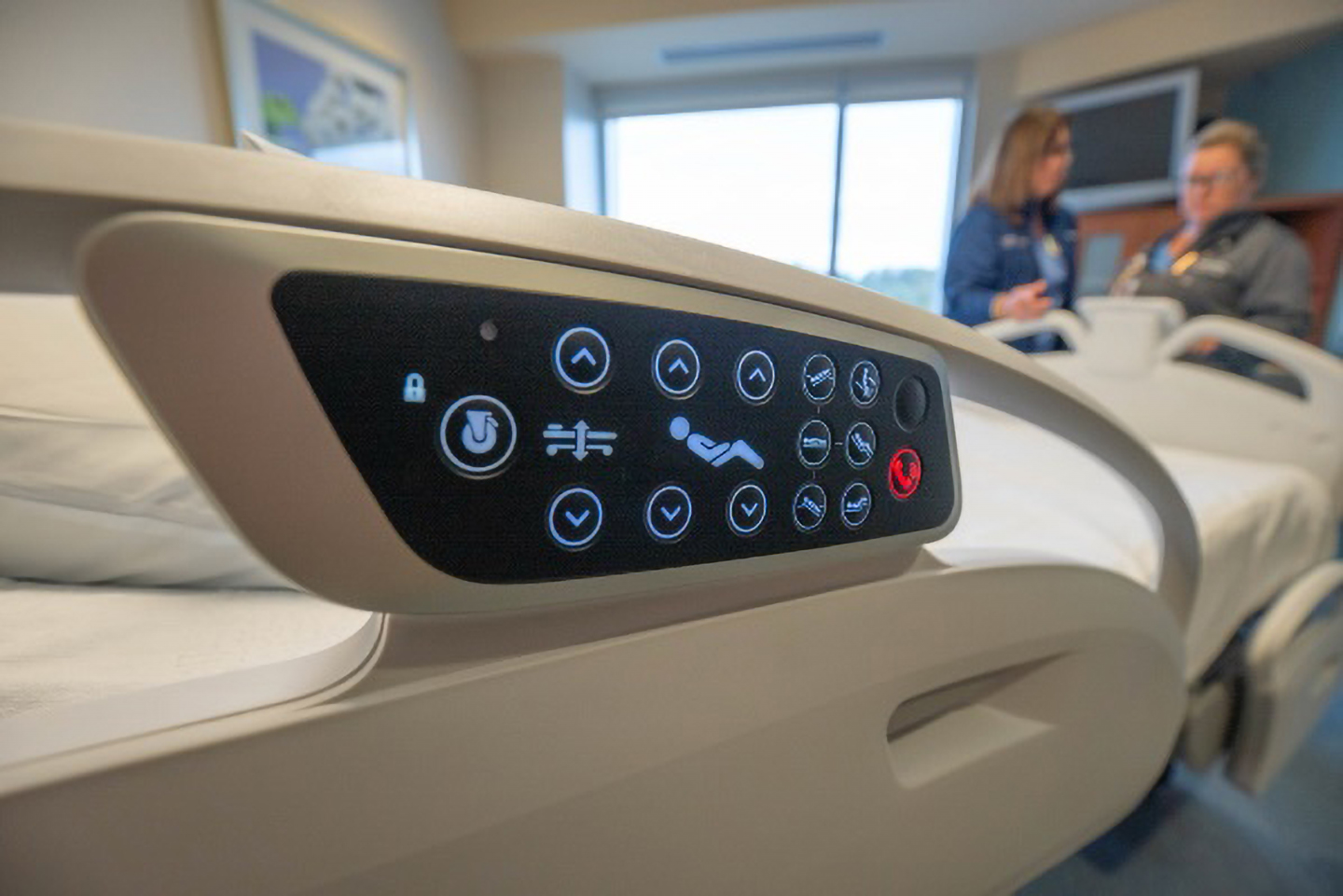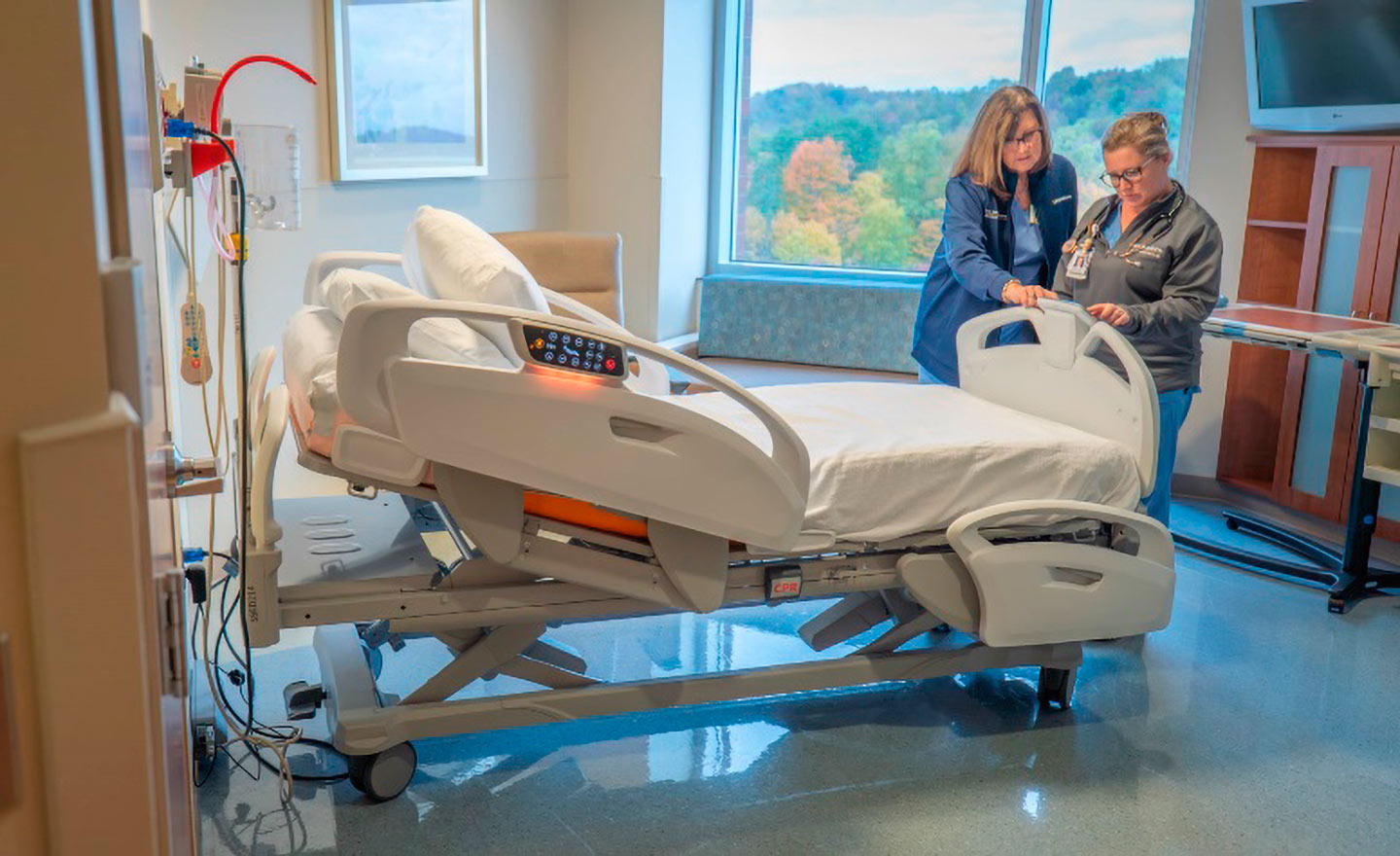United Hospital Center (UHC) recently replaced its entire fleet of hospital inpatient beds with the advanced ProCuity® model by Stryker. These state-of-the-art beds are completely wireless and feature a low-height profile for advanced fall prevention, providing increased comfort and safety for both patients and caregivers.
“United Hospital Center is known for excellence, and we carry this commitment to excellence over into what we provide for patient comfort, care, and safety.” said David F. Hess, MD, UHC CEO and President. “These new beds were evaluated and selected by our nursing and support staff. They will provide the comfort and support patient needs during recovery, help to improve patient outcomes, decrease risk of falling, and assist our caregivers.”
Each bed has wireless technology that connects seamlessly to the nurse call system. Three-position side rails allow for easier patient entry and exit, as well as nurse-patient interaction. By working in a “clocking motion,” the side rails stay tightly close to the bed, avoiding unnecessary interference with any medical equipment next to the bed.

A detailed view of the ProCuity® hospital bed’s patient-centric clinical dashboard, which provides caregivers with increased visibility to safe bed configuration and bed exit alarm activity to help prevent falls.
ProCuity’s unique bed alarm uses advanced technology that senses a patient’s weight and will alert nurses if a patient is out of position or has left the bed. With ProCuity’s iBed® Watch system, all operational aspects of the bed, from side rail positioning, head of bed angle and height, are monitored to ensure that it is always in a safe position for the patient.
“This innovative bed system is the result of years of extensive research and feedback from nurses and patients to create what is truly ‘brilliance in a bed’,” said Stephanie Smart, MSN, RN, Vice President Nursing/CNO.
Other features include:
- Fully wireless technology with intuitive touchscreens for easy operation.
- Ultra-low height adjustability and ergonomically designed side rails for safer patient positioning, fall prevention and to promote early patient mobility.
- Convenient USB port and phone holder for patient use.
- Integrated bed-extender to accommodate taller patients.
- Support surface for pressure injury prevention and pulmonary therapy.
- Electric braking system with hand-adjusted speed control that enables caregivers to move patients more easily and with less stress on their back.

United Hospital Center nurses Leigh Belin, BSN, RNC-EFM, RNC-LRN, LCCE, Clinical Educator, and Shannon Harvey, RN, learn about the newly installed UHC hospital beds. Each bed’s mattress is a gel support surface designed to help prevent all stages of pressure injuries by addressing key risk factors of skin breakdown: pressure, shear, and moisture. The surface is composed primarily of gel structures that help redistribute pressure by buckling and absorbing the patient’s weight.
While many hospitals have other advanced technology bed systems within their facilities, UHC has completed a full conversion to the advanced Stryker beds in every inpatient room including specialized labor and delivery beds for expecting mothers.
“With the ProCuity bed system, UHC is further demonstrating our tradition of delivering excellent patient outcomes in a comfortable healing environment,” Dr. Hess said.
Please note, the information provided throughout this site is not intended or implied to be a substitute for professional medical advice, diagnosis, or treatment. All content, including text, graphics, images, and video, on or available through this website is for general information purposes only. If you are experiencing related symptoms, please visit your doctor or call 9-1-1 in an emergency.